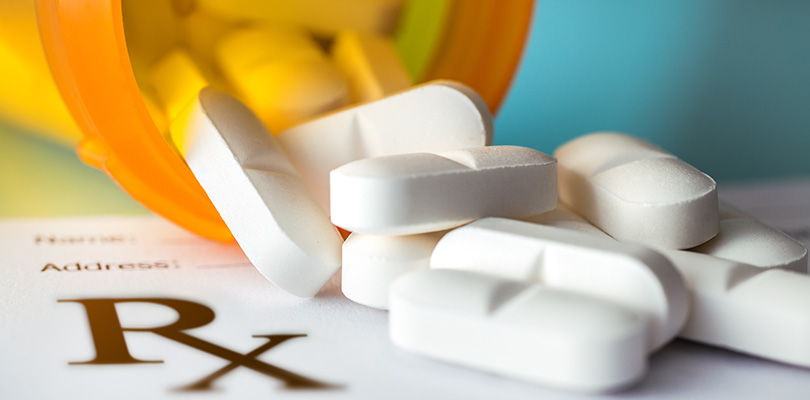Narcolepsy Medications 101
If you have been diagnosed with narcolepsy, you may be looking into the options that you have for treatment. Your doctor will work with you to design a personalized plan that works best to improve your alertness and combat sleepiness. There are several narcolepsy medications available, but the goal is to produce the most significant benefits with the fewest side effects.
It is important to document how you feel or any physical changes that you experience as you take medications, so that your doctor can find the best fit for you. We have compiled a list of the most common narcolepsy medications and included a general description of each.
Narcolepsy Medication Options
There are different general goals of medications. The following narcolepsy medications are designed to improve your alertness.
Modafinil and Armodafinil
This medication comes in both name brand and generic versions and has released an updated medication type as well. Modafinil increases the production of dopamine in your brain. Dopamine helps to improve your overall alertness. A single dose of this medication lasts about eight hours.
Some individuals find that taking a half dose in the morning and the second half at lunch work best to help them through the day.
Side effects may include:
- A headache
- Vomiting
- Insomnia
If you develop a rash while taking this medication, it is critical to seek medical help immediately. Modafinil has also been found to reduce the effectiveness of women’s birth control pills. Work with your doctor to find suitable alternative methods of birth control.
Amphetamines
This group of medications works by increasing the levels of dopamine in the brain to promote alertness. They can also increase levels of serotonin and norepinephrine, two agents that improve your ability to stay awake.
These medications typically come in 3-4-hour effectiveness periods, with extended-release forms lasting between six and eight hours. Patients may need to work with their doctor to identify the best schedule for them. Also, patients should be considerate when taking amphetamine medications.
While amphetamines are typically prescribed with no issues, they should not be used for people with high blood pressure or heart conditions.
Side effects may include:
- Headaches
- Anxiety
- Psychosis
- Mania
These prescriptions may trigger heart problems and rarely, sudden death.
Amphetamines can also be addictive, so be sure to work closely with your doctor to monitor your dosage levels and physical dependence on the medication.
Sodium Oxybate
This medication contains chemicals that are naturally found in the brain which is the sodium salt of gamma-hydroxybutyrate (GHB). This medication is a sedating liquid that is taken at bedtime, and then again 3-4-hours later.
Sodium oxybate helps to produce a deep sleep through the night. After several weeks of use, patients report that they have an increased ability to remain awake and alert through the day. Your doctor will probably start with an initial low dose and increase the dosage as needed.
Are you experiencing bleeding, painful gums? This just one of the many signs of a gum infection. Learn about the top gum infection symptoms here.
Side effects may include:
- A headache
- Nausea
- Dizziness
- Confusion
- Depression
It is also essential to ensure that patients taking this medication could wake up if a small child, fire alarm, or other need occurred during the night.
Medications to Improve Cataplexy
The next medications are designed to treat the roughly 50 percent of narcolepsy patients that also have cataplexy.
- Antidepressants – The idea behind using antidepressants to suppress cataplexy is because these medications suppress rapid eye movement (REM) experienced during sleep. Cataplexy is likely the occurrence of a REM state that occurs when a person is awake. Patients who use antidepressants to treat cataplexy report 90-100 percent reductions in episodes. These medications each have different benefits and a range of side effects. It is important to work closely with your doctor when using these medications to find which option is best for you.
- Sodium oxybate – This medication that was previously described can also influence cataplexy. Due to the dual nature of benefits, this medication may be a critical component of an individual’s treatment plan.
Natural Options for the Treatment of Narcolepsy
Some patients aren’t comfortable taking prescription medications or feel that their needs can be met with naturally occurring ingredients instead. Fortunately, individuals that suffer from narcolepsy have options in this market too.
- Vitamin D – One study found that their sample of patients who had been diagnosed with narcolepsy also had a deficiency of vitamin D. Vitamin D deficiencies have also been linked to fatigue and pain. Supplementing your treatment with Vitamin D may have positive impacts on your overall health and narcolepsy treatment.
- 5-HTP - This medication was studied in a double-blind study and found significant improvement in the treatment of narcolepsy. However, if you opt to use 5-HTP, the study used very high doses, and this compound interferes with other medications that are commonly prescribed for narcolepsy. Therefore, it is important to use this medication with medical direction.
Overview
In addition to medications, several other options can aid in your treatment of narcolepsy. For some, this may include a plan for a healthy diet and regular exercise.
Narcolepsy is not a disease that should be self-diagnosed and poses a significant danger to yourself and people around you if it is not adequately treated.
If you believe that you may have narcolepsy, you should visit with your doctor and discuss your concerns and potential treatment options.






